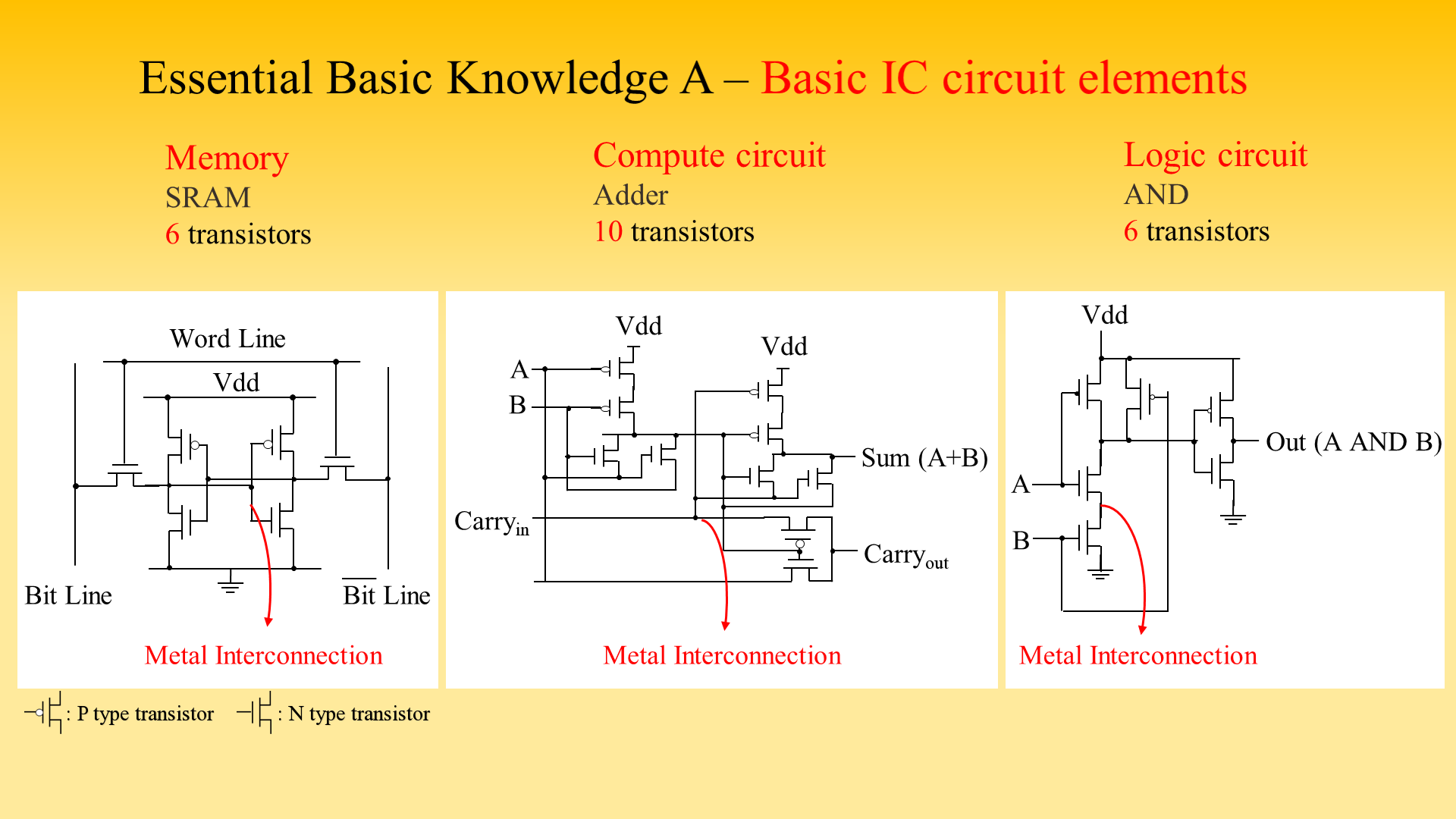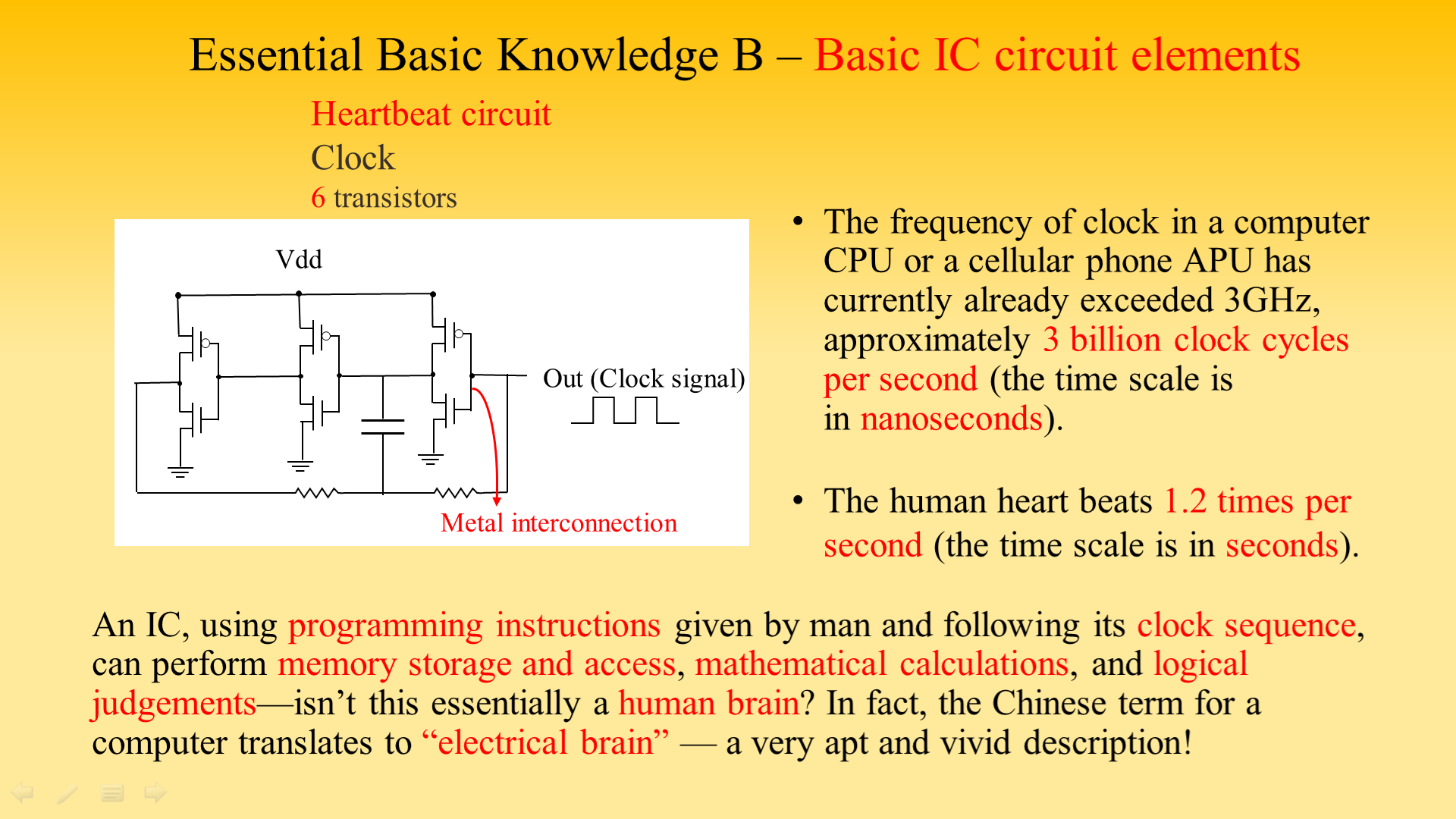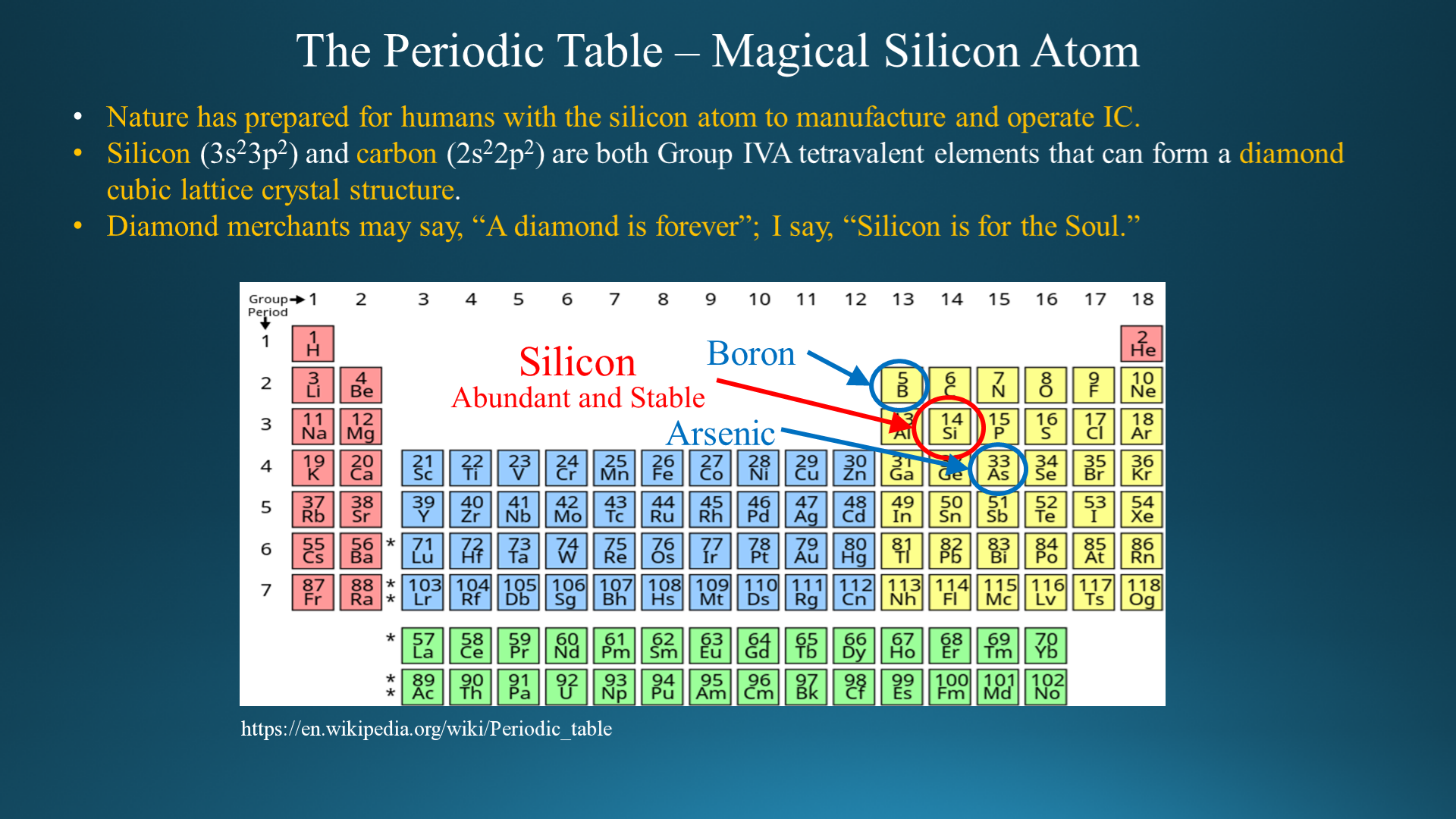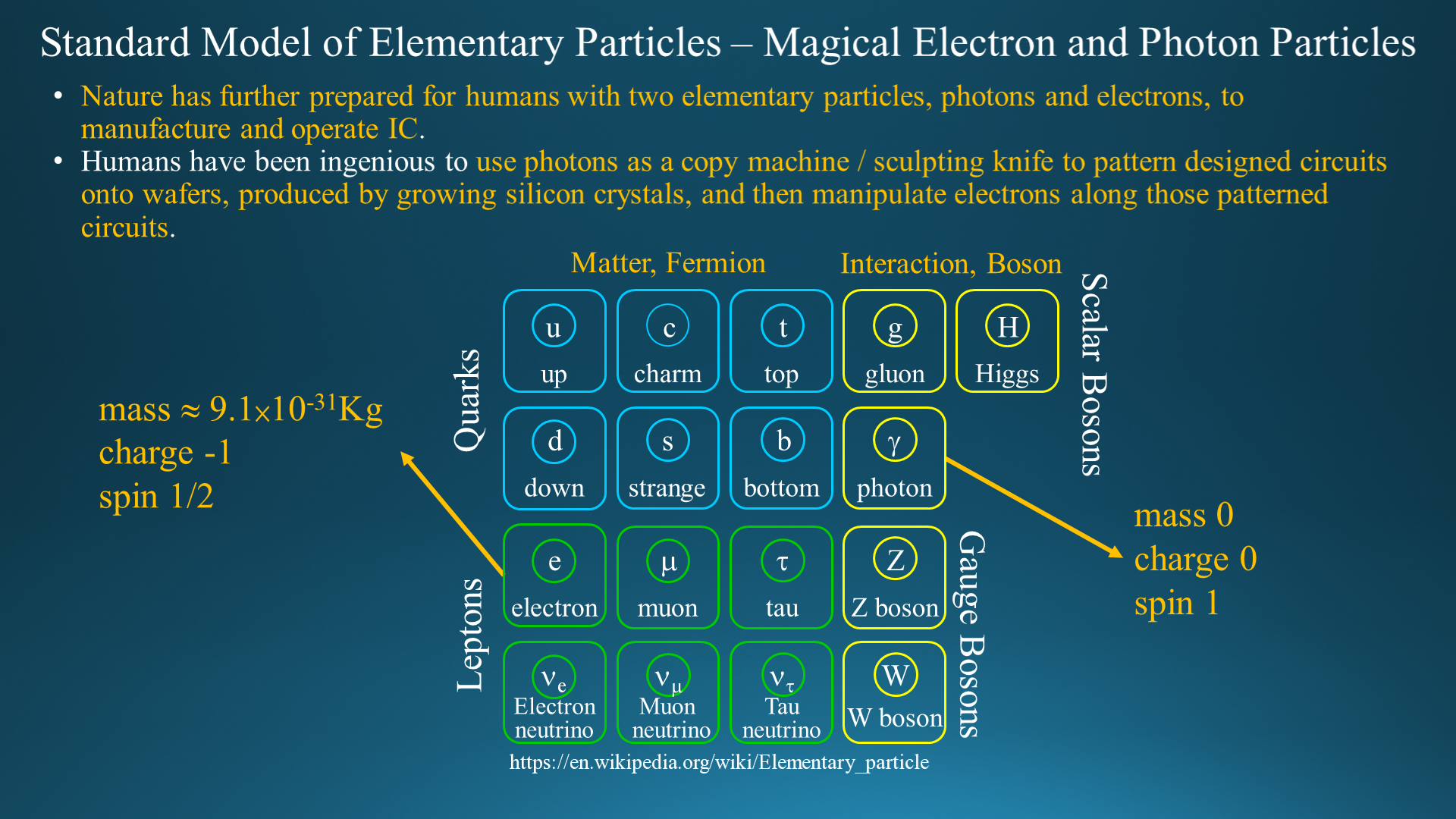If you have comments, questions or interest described in the following article, please contact us at:
Email: cometrue@icometrue.com
Introduction
In preparing to speak to the young scholars attending the Marie Curie Camp about seventy spectacular years of the semiconductor integrated circuits (IC) development process, I have been given the opportunity to revisit and connect all the events, stories, and insights that I have witnessed, experienced, and held close to my heart over my forty years in the semiconductor industry. Having the luxury of hindsight, I am now able to appreciate the true profoundness of that journey and find myself praising and admiring the magic of nature’s laws and the wonders of human craftmanship! I am thrilled to share the history and development of semiconductors, which I will show is just as epic and exciting as the development of quantum physics in the early 20th century. The development of semiconductors is not just basic science—it is science, engineering, and craftmanship. Furthermore, the semiconductor story goes beyond the history of quantum physics in that it involves the complications and influences of business factors like money and profit.
Lesson 1: The origin and evolution of the semiconductor world: abiding by Moore’s Law
A transistor is a switch that can be actively controlled by electrical signals. The “active” switch function and characteristics of a transistor foreshadows its destiny for artificial intelligence. An IC is formed by linking multiple transistors with metal interconnections. The basic components of an IC include memory cells (e.g., static random-access memory (SRAM)) for information storage, calculation circuits (e.g., Adder) for mathematical calculations, logic circuits (e.g., “AND”, “OR”) for logical judgements, and heartbeat circuits (e.g., Clock) for timing. The current frequency of the clock in a computer’s Central Processing Unit (CPU) or a mobile phone’s Application Processing Unit (APU) already surpasses 3GHz, equivalent to three billion sways per second (for which the nano-second is the unit of time). The human heart, however, beats only 1.2 times per second (here, the second is the unit of time). An IC, using programming instructions given by man and following its clock sequence, can perform memory storage and access, mathematical calculations, and logical judgements—isn’t this essentially a human brain? In fact, the Chinese term for a computer translates to “electrical brain”— a very apt and vivid description!


The origin and evolution of the semiconductor world is similar to how our universe originated and formed. Much like the expansion of the universe, the evolution of semiconductors follows the patterns laid out by the magical power of numbers; both involve great magnitudes of scale and quantity. Following Einstein’s General Relativity, the universe expanded continuously from a single point 13.8 billion years ago to its current size of 1027 m in diameter, containing 1022 stars. The development of semiconductor chips, in turn, followed the man-made Moore’s Law. A semiconductor chip originally contained only two transistors (each 3×10-3 m in size) and has evolved to now containing 5×1010 transistors (each 3×10-9 m in size).

Moore’s Law can be explained by using a basic geometric progression whereas General Relativity requires the more advanced Riemann Curvature Tensor to be fully explained. The fact that man’s capability resulted in the development of semiconductors following an empirical law in precisely the same manner as nature follows the universal Law of Physics is truly amazing and moving!

There is no other object in the history of human civilization that abide by a rule the way semiconductor IC chips follow Moore’s Law. Following Moore’s Law would require the area of each transistor to reduce by half every 20 months in order to double the numbers of transistors each IC chip could contain. The development of IC has gone through thirty-seven development cycles since its invention in 1958, resulting in a 237 increase in the number of transistors per chip. To illustrate how amazing this actually is, let us compare this with the development of other technologies. The automobile experienced eighty-one development cycles since it was first invented in 1885 by a German engineer Karl Benz. If it had followed Moore’s Law, the automobile would have decreased in size by 281 times and would now be 10-11 m (or 10-2 nm) —your car would be in the sub-atomic zone! However, man did not have the need to reduce the size of an automobile continuously, and thus, the automobile industry did not follow Moore’s Law. Looking at another example, when the airplane was first invented by the Wright brothers in 1903, people had hoped that airplanes would keep increasing in size and be made as large as possible. Yet, after seventy development cycles, the length of the largest plane today (Airbus Beluga) is only 56m—it has not scaled by a factor of 270 as Moore’s Law may have otherwise suggested. Due to the limitations of physics and man not having a strong enough demand for these developments, the size of airplanes also did not follow a geometric progression.
Based on my personal experience, I believe that if I cannot describe an event with mathematics or imagine it with numbers, I probably have not thought about the event clearly enough. Plato, the great ancient Greek philosopher said, “Let no one ignorant of geometry enter here.” While we can conceptualize Moore’s Law using the basic mathematics of geometric series, the fact of the matter is that no other natural or human affair demonstrates this type of geometric progression. This is because during the development of nature or human affairs, the competition between activators and inhibitors will always lead to an equilibrium state. For example, in biology, Cyclin Dependent Kinases (CDK) act as activators of cell cycle progression and cell division while CDK inhibitors (CDKI) act as inhibitors to regulate this process. Further, during mitosis, the length of telomeres at the end of each chromosome will shorten each time a cell divides. When telomeres are shortened to the level that it can no longer maintain genomic stability, cells will stop dividing, leading to senescence and eventually death. CDKI regulation of cell cycle progression and cell division, when factoring in telomeres’ impact on cell death, maintains the number of cells in the human body in order to not geometrically expand in an uncontrolled manner. Due to their burning desires and demands for ever more powerful IC chips, humans have put enormous effort into finding ways to increase activators and have even challenged the limitations of physics for IC development. After thirty-seven (237) development cycles, the efforts have still not ceased, and the development of IC chips will certainly continue generating earth shattering results.
Nature has prepared for man with the silicon atom and two elementary particles, photons and electrons, to manufacture IC. (Isn’t it incredible that there are two elementary particles, photons and electrons, with which we are all familiar in the Standard Model of Elementary Particles!) Silicon is one of the Group IVA tetravalent elements of the Periodic Table, with electrons filling half of the outermost s and p orbitals. Abundant and stable in nature, silicon can be mixed with impurities (a process known as “doping”) to modulate its properties so that it will contain one more or one fewer electron, thus making it semiconductive.


Humans have been ingenious to use photons as a copy machine / sculpting knife to pattern designed circuits onto wafers, produced by growing silicon crystals, and then manipulate electrons along those patterned circuits. Silicon (3s23p2) and carbon (2s22p2) are both Group IVA tetravalent elements that can form a diamond cubic lattice crystal structure, but while man can use technologies to grow silicon crystals at low cost and mass-produce silicon wafers, it cannot do the same with artificial diamonds. Today, semiconductor chips deeply affect civilization and our daily lives. Diamond merchants may say, “A diamond is forever”, but seeing the look of desperation on the faces of people looking for their lost iPhones like soulless zombies, I say, “Silicon is for the Soul.”
(This article was translated from the article (in Chinese) published in “DIGITIMES” on November 15th, 2021, while with some revisions.)
Link of “DIGITIMES”: Lesson 1